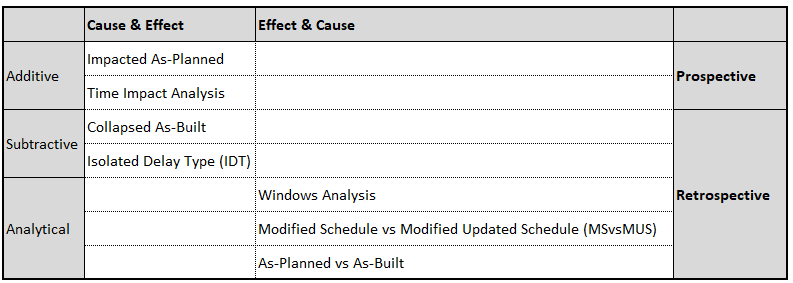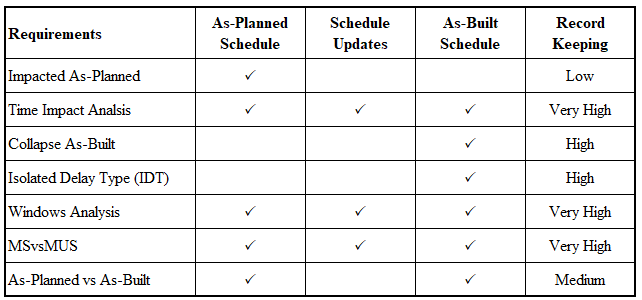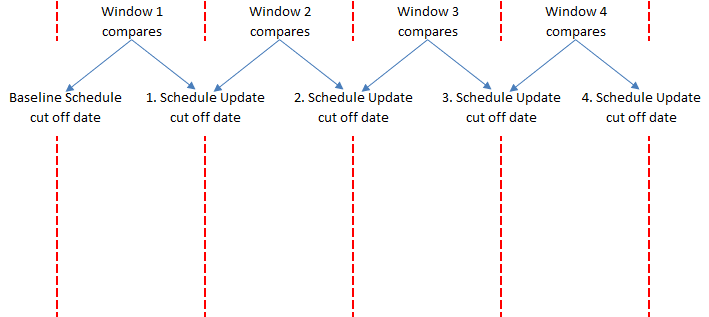
Table 1 Common delay analysis methods
The common delay analysis methods - which are categorized as per their charcteristics - are depicted in Table 1 below.

Table 1 Common delay analysis methods
Highlighting the facts occurred during the course of the projects, Windows Analysis which compute and apportion the delays retrospectively - is the most preferred delay analysis methods [1]. Table 2 below illustrated the requirements of the foregoing delay analysis methods.


